Aruna Seneviratne
Multi-Objective Optimization for Privacy-Utility Balance in Differentially Private Federated Learning
Mar 27, 2025Abstract:Federated learning (FL) enables collaborative model training across distributed clients without sharing raw data, making it a promising approach for privacy-preserving machine learning. However, ensuring differential privacy (DP) in FL presents challenges due to the trade-off between model utility and privacy protection. Clipping gradients before aggregation is a common strategy to limit privacy loss, but selecting an optimal clipping norm is non-trivial, as excessively high values compromise privacy, while overly restrictive clipping degrades model performance. In this work, we propose an adaptive clipping mechanism that dynamically adjusts the clipping norm using a multi-objective optimization framework. By integrating privacy and utility considerations into the optimization objective, our approach balances privacy preservation with model accuracy. We theoretically analyze the convergence properties of our method and demonstrate its effectiveness through extensive experiments on MNIST, Fashion-MNIST, and CIFAR-10 datasets. Our results show that adaptive clipping consistently outperforms fixed-clipping baselines, achieving improved accuracy under the same privacy constraints. This work highlights the potential of dynamic clipping strategies to enhance privacy-utility trade-offs in differentially private federated learning.
Adaptive Clipping for Privacy-Preserving Few-Shot Learning: Enhancing Generalization with Limited Data
Mar 27, 2025Abstract:In the era of data-driven machine-learning applications, privacy concerns and the scarcity of labeled data have become paramount challenges. These challenges are particularly pronounced in the domain of few-shot learning, where the ability to learn from limited labeled data is crucial. Privacy-preserving few-shot learning algorithms have emerged as a promising solution to address such pronounced challenges. However, it is well-known that privacy-preserving techniques often lead to a drop in utility due to the fundamental trade-off between data privacy and model performance. To enhance the utility of privacy-preserving few-shot learning methods, we introduce a novel approach called Meta-Clip. This technique is specifically designed for meta-learning algorithms, including Differentially Private (DP) model-agnostic meta-learning, DP-Reptile, and DP-MetaSGD algorithms, with the objective of balancing data privacy preservation with learning capacity maximization. By dynamically adjusting clipping thresholds during the training process, our Adaptive Clipping method provides fine-grained control over the disclosure of sensitive information, mitigating overfitting on small datasets and significantly improving the generalization performance of meta-learning models. Through comprehensive experiments on diverse benchmark datasets, we demonstrate the effectiveness of our approach in minimizing utility degradation, showcasing a superior privacy-utility trade-off compared to existing privacy-preserving techniques. The adoption of Adaptive Clipping represents a substantial step forward in the field of privacy-preserving few-shot learning, empowering the development of secure and accurate models for real-world applications, especially in scenarios where there are limited data availability.
An Empirical Study of Code Obfuscation Practices in the Google Play Store
Feb 07, 2025



Abstract:The Android ecosystem is vulnerable to issues such as app repackaging, counterfeiting, and piracy, threatening both developers and users. To mitigate these risks, developers often employ code obfuscation techniques. However, while effective in protecting legitimate applications, obfuscation also hinders security investigations as it is often exploited for malicious purposes. As such, it is important to understand code obfuscation practices in Android apps. In this paper, we analyze over 500,000 Android APKs from Google Play, spanning an eight-year period, to investigate the evolution and prevalence of code obfuscation techniques. First, we propose a set of classifiers to detect obfuscated code, tools, and techniques and then conduct a longitudinal analysis to identify trends. Our results show a 13% increase in obfuscation from 2016 to 2023, with ProGuard and Allatori as the most commonly used tools. We also show that obfuscation is more prevalent in top-ranked apps and gaming genres such as Casino apps. To our knowledge, this is the first large-scale study of obfuscation adoption in the Google Play Store, providing insights for developers and security analysts.
Entailment-Driven Privacy Policy Classification with LLMs
Sep 25, 2024



Abstract:While many online services provide privacy policies for end users to read and understand what personal data are being collected, these documents are often lengthy and complicated. As a result, the vast majority of users do not read them at all, leading to data collection under uninformed consent. Several attempts have been made to make privacy policies more user friendly by summarising them, providing automatic annotations or labels for key sections, or by offering chat interfaces to ask specific questions. With recent advances in Large Language Models (LLMs), there is an opportunity to develop more effective tools to parse privacy policies and help users make informed decisions. In this paper, we propose an entailment-driven LLM based framework to classify paragraphs of privacy policies into meaningful labels that are easily understood by users. The results demonstrate that our framework outperforms traditional LLM methods, improving the F1 score in average by 11.2%. Additionally, our framework provides inherently explainable and meaningful predictions.
Smart CSI Processing for Accruate Commodity WiFi-based Humidity Sensing
Sep 12, 2024



Abstract:Indoor humidity is a crucial factor affecting people's health and well-being. Wireless humidity sensing techniques are scalable and low-cost, making them a promising solution for measuring humidity in indoor environments without requiring additional devices. Such, machine learning (ML) assisted WiFi sensing is being envisioned as the key enabler for integrated sensing and communication (ISAC). However, the current WiFi-based sensing systems, such as WiHumidity, suffer from low accuracy. We propose an enhanced WiFi-based humidity detection framework to address this issue that utilizes innovative filtering and data processing techniques to exploit humidity-specific channel state information (CSI) signatures during RF sensing. These signals are then fed into ML algorithms for detecting different humidity levels. Specifically, our improved de-noising solution for the CSI captured by commodity hardware for WiFi sensing, combined with the k-th nearest neighbour ML algorithm and resolution tuning technique, helps improve humidity sensing accuracy. Our commercially available hardware-based experiments provide insights into achievable sensing resolution. Our empirical investigation shows that our enhanced framework can improve the accuracy of humidity sensing to 97%.
Securing V2I Backscattering from Eavesdropper
Jul 22, 2024



Abstract:As our cities become more intelligent and more connected with new technologies like 6G, improving communication between vehicles and infrastructure is essential while reducing energy consumption. This study proposes a secure framework for vehicle-to-infrastructure (V2I) backscattering near an eavesdropping vehicle to maximize the sum secrecy rate of V2I backscatter communication over multiple coherence slots. This sustainable framework aims to jointly optimize the reflection coefficients at the backscattering vehicle, carrier emitter power, and artificial noise at the infrastructure, along with the target vehicle's linear trajectory in the presence of an eavesdropping vehicle in the parallel lane. To achieve this optimization, we separated the problem into three parts: backscattering coefficient, power allocation, and trajectory design problems. We respectively adopted parallel computing, fractional programming, and finding all the candidates for the global optimal solution to obtain the global optimal solution for these three problems. Our simulations verified the fast convergence of our alternating optimization algorithm and showed that our proposed secure V2I backscattering outperforms the existing benchmark by over 4.7 times in terms of secrecy rate for 50 slots. Overall, this fundamental research on V2I backscattering provided insights to improve vehicular communication's connectivity, efficiency, and security.
Cybersecurity Challenges of Power Transformers
Feb 25, 2023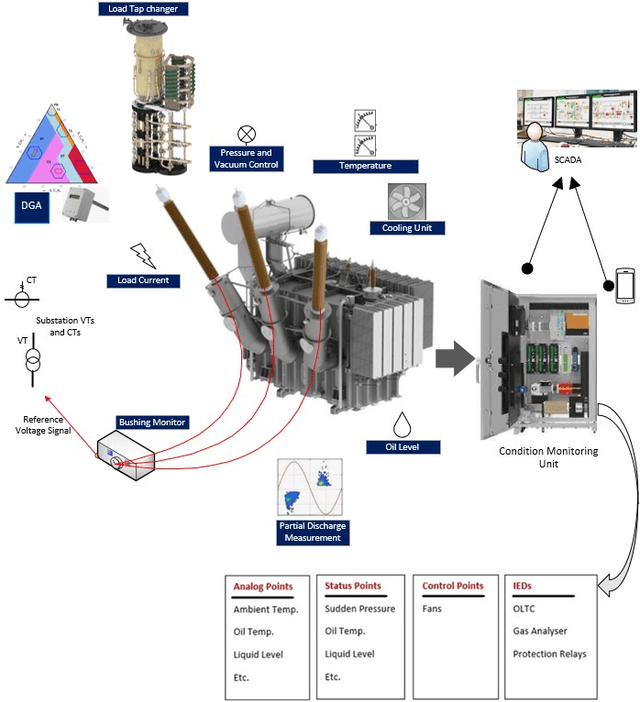
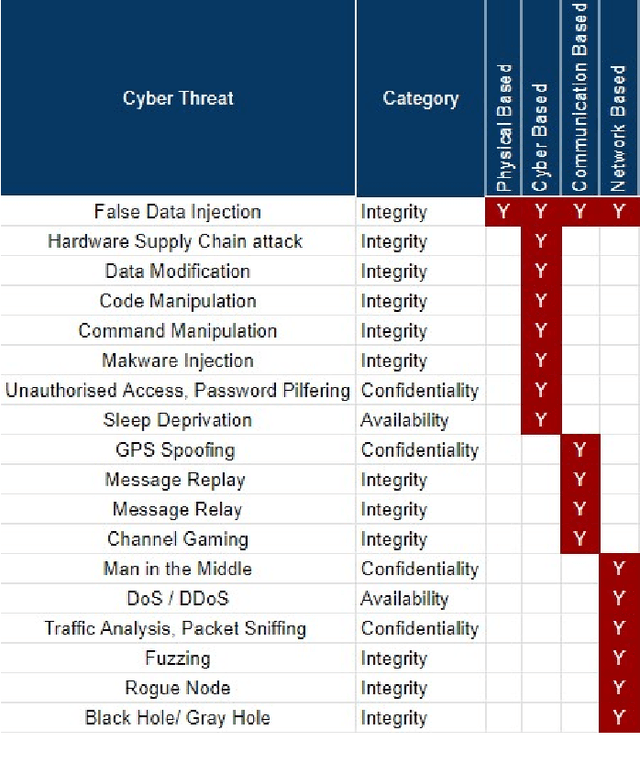
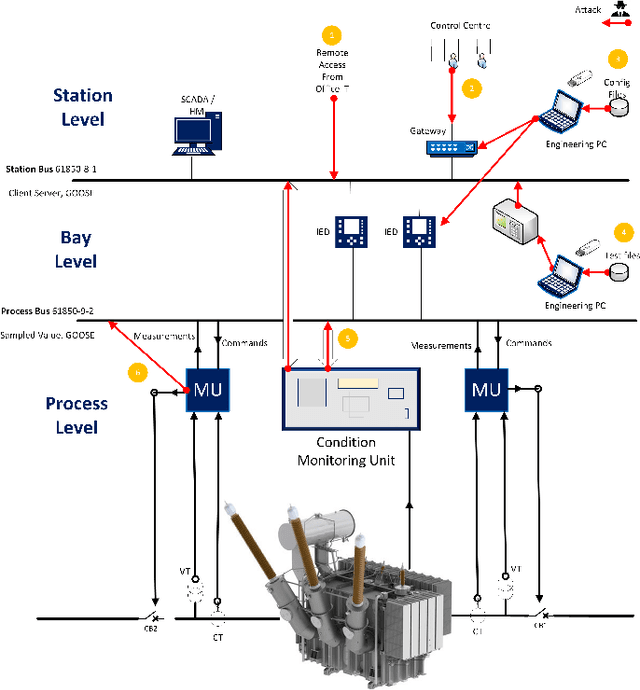
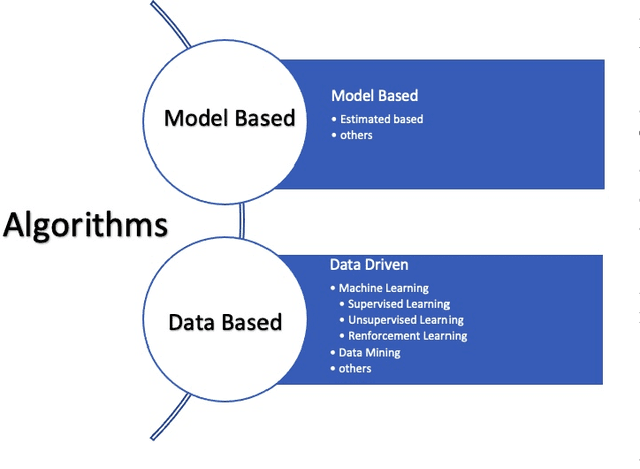
Abstract:The rise of cyber threats on critical infrastructure and its potential for devastating consequences, has significantly increased. The dependency of new power grid technology on information, data analytic and communication systems make the entire electricity network vulnerable to cyber threats. Power transformers play a critical role within the power grid and are now commonly enhanced through factory add-ons or intelligent monitoring systems added later to improve the condition monitoring of critical and long lead time assets such as transformers. However, the increased connectivity of those power transformers opens the door to more cyber attacks. Therefore, the need to detect and prevent cyber threats is becoming critical. The first step towards that would be a deeper understanding of the potential cyber-attacks landscape against power transformers. Much of the existing literature pays attention to smart equipment within electricity distribution networks, and most methods proposed are based on model-based detection algorithms. Moreover, only a few of these works address the security vulnerabilities of power elements, especially transformers within the transmission network. To the best of our knowledge, there is no study in the literature that systematically investigate the cybersecurity challenges against the newly emerged smart transformers. This paper addresses this shortcoming by exploring the vulnerabilities and the attack vectors of power transformers within electricity networks, the possible attack scenarios and the risks associated with these attacks.
Intelligent Blockchain-based Edge Computing via Deep Reinforcement Learning: Solutions and Challenges
Jun 17, 2022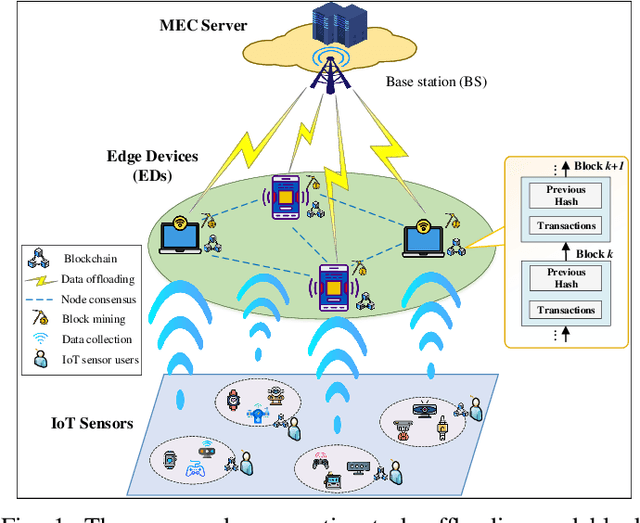
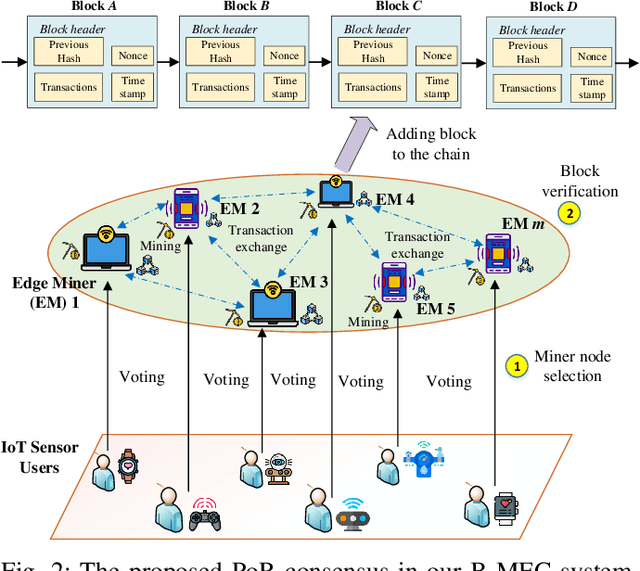
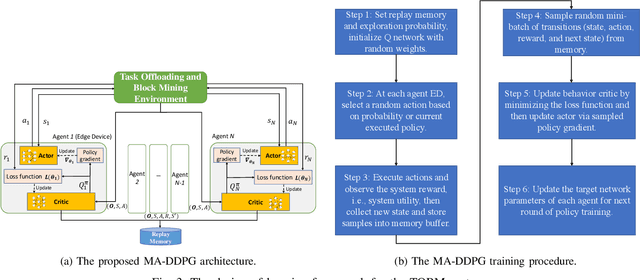

Abstract:The convergence of mobile edge computing (MEC) and blockchain is transforming the current computing services in wireless Internet-of-Things networks, by enabling task offloading with security enhancement based on blockchain mining. Yet the existing approaches for these enabling technologies are isolated, providing only tailored solutions for specific services and scenarios. To fill this gap, we propose a novel cooperative task offloading and blockchain mining (TOBM) scheme for a blockchain-based MEC system, where each edge device not only handles computation tasks but also deals with block mining for improving system utility. To address the latency issues caused by the blockchain operation in MEC, we develop a new Proof-of-Reputation consensus mechanism based on a lightweight block verification strategy. To accommodate the highly dynamic environment and high-dimensional system state space, we apply a novel distributed deep reinforcement learning-based approach by using a multi-agent deep deterministic policy gradient algorithm. Experimental results demonstrate the superior performance of the proposed TOBM scheme in terms of enhanced system reward, improved offloading utility with lower blockchain mining latency, and better system utility, compared to the existing cooperative and non-cooperative schemes. The paper concludes with key technical challenges and possible directions for future blockchain-based MEC research.
Federated Learning for Smart Healthcare: A Survey
Nov 16, 2021



Abstract:Recent advances in communication technologies and Internet-of-Medical-Things have transformed smart healthcare enabled by artificial intelligence (AI). Traditionally, AI techniques require centralized data collection and processing that may be infeasible in realistic healthcare scenarios due to the high scalability of modern healthcare networks and growing data privacy concerns. Federated Learning (FL), as an emerging distributed collaborative AI paradigm, is particularly attractive for smart healthcare, by coordinating multiple clients (e.g., hospitals) to perform AI training without sharing raw data. Accordingly, we provide a comprehensive survey on the use of FL in smart healthcare. First, we present the recent advances in FL, the motivations, and the requirements of using FL in smart healthcare. The recent FL designs for smart healthcare are then discussed, ranging from resource-aware FL, secure and privacy-aware FL to incentive FL and personalized FL. Subsequently, we provide a state-of-the-art review on the emerging applications of FL in key healthcare domains, including health data management, remote health monitoring, medical imaging, and COVID-19 detection. Several recent FL-based smart healthcare projects are analyzed, and the key lessons learned from the survey are also highlighted. Finally, we discuss interesting research challenges and possible directions for future FL research in smart healthcare.
Federated Learning for COVID-19 Detection with Generative Adversarial Networks in Edge Cloud Computing
Oct 14, 2021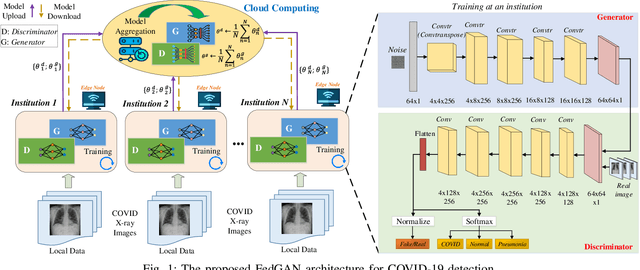
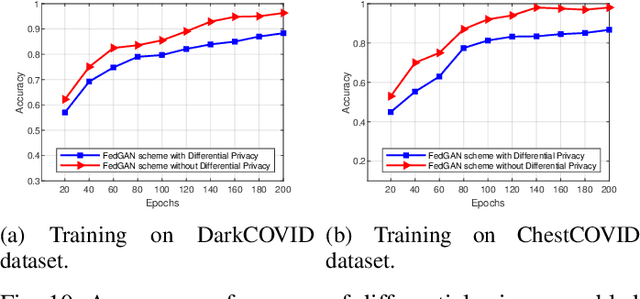
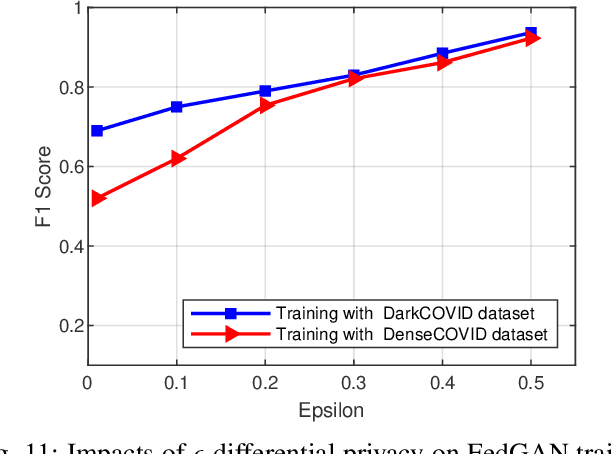
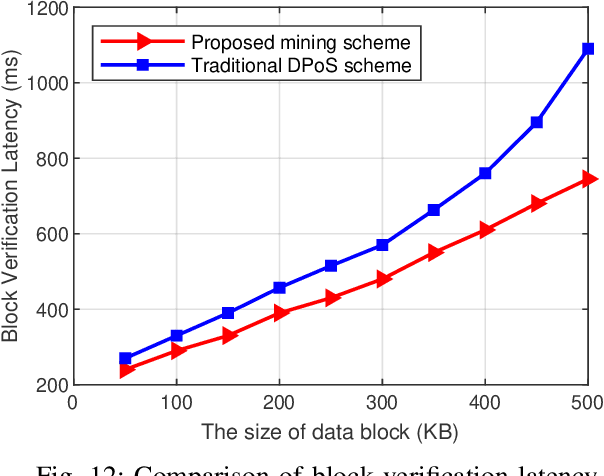
Abstract:COVID-19 has spread rapidly across the globe and become a deadly pandemic. Recently, many artificial intelligence-based approaches have been used for COVID-19 detection, but they often require public data sharing with cloud datacentres and thus remain privacy concerns. This paper proposes a new federated learning scheme, called FedGAN, to generate realistic COVID-19 images for facilitating privacy-enhanced COVID-19 detection with generative adversarial networks (GANs) in edge cloud computing. Particularly, we first propose a GAN where a discriminator and a generator based on convolutional neural networks (CNNs) at each edge-based medical institution alternatively are trained to mimic the real COVID-19 data distribution. Then, we propose a new federated learning solution which allows local GANs to collaborate and exchange learned parameters with a cloud server, aiming to enrich the global GAN model for generating realistic COVID-19 images without the need for sharing actual data. To enhance the privacy in federated COVID-19 data analytics, we integrate a differential privacy solution at each hospital institution. Moreover, we propose a new blockchain-based FedGAN framework for secure COVID-19 data analytics, by decentralizing the FL process with a new mining solution for low running latency. Simulations results demonstrate the superiority of our approach for COVID-19 detection over the state-of-the-art schemes.
 Add to Chrome
Add to Chrome Add to Firefox
Add to Firefox Add to Edge
Add to Edge